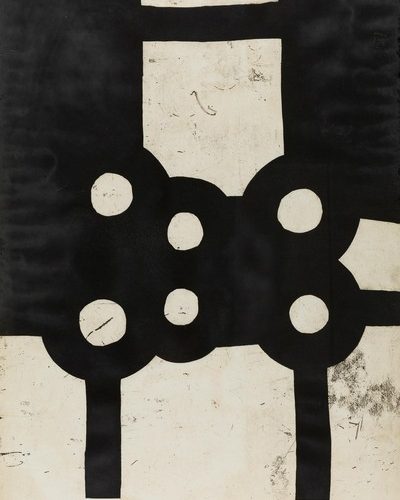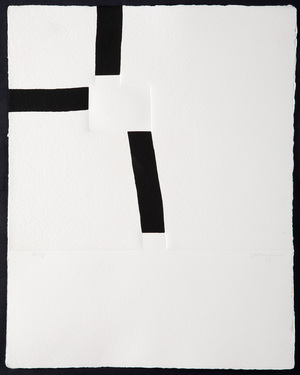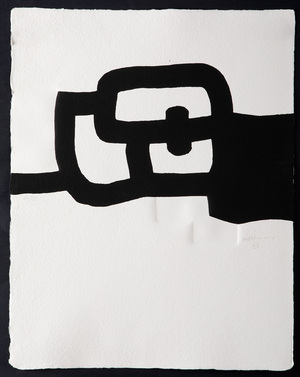The importance of engraving in the work of Eduardo Chillida
Eduardo Chillida’s mastery in his facet as an engraver reflects the authentic artistic dimension of what was one of the great references of the European avant-gardes .
Despite being best known for his facet as a sculptor, it would be unfair to limit the prestige and international recognition that the artist from San Sebastian achieved solely to his sculptural production. Throughout his long history Chillida developed multiple artistic practices, which, like engraving, allow us to build a deeper and more complex story about the true magnitude of the creative universe, of which he has been one of the key figures in the radical transformation that Spanish art experienced during the 20th century.
As can be seen from the set of etchings, xylographs and serigraphs in the tender, and despite the sculptural substratum that underlies his production as an engraver, Chillida never subordinated this practice to another purpose. Far from considering it a minor element in his career, the Basque artist turned the multiple engraving techniques he practiced into a universe of his own. It reflects the concerns and findings around the concepts of space and time under which he forged his creative identity. In fact, the constant process of investigation to which he submitted his work, is developed in parallel in both manifestations, being able to find numerous points of contact between them.
The mastery with which Chillida handled the different engraving techniques gives rise to an extensive set of textures and irregular geometric shapes that produce an almost sculptural effect on the textured paper . Likewise, the deep interest in making space visible through the consideration of the surrounding forms that surround it, materializes here from the contrast of masses of black color that are linked through the white space of the paper. Establishing a dialogue between negative and positive space to reveal a hidden space where antagonistic concepts such as materiality and weightlessness, volume and emptiness or limit and infinity converge.
But beyond the study of form and space, his graphic work is flooded with that black light that reveals his transcendental and almost mystical conception of existence, where matter is revealed to us as the manifestation of spirit.
In short, his prints are a magnificent example of his enduring fascination with the concepts of space, emptiness and form. His works emerged under the indomitable cadence of the Cantabrian rhythms to capture in them the space where everything is born and everything breaks. That space where, as he stated “In a line the world unites, and with a line the world divides.









